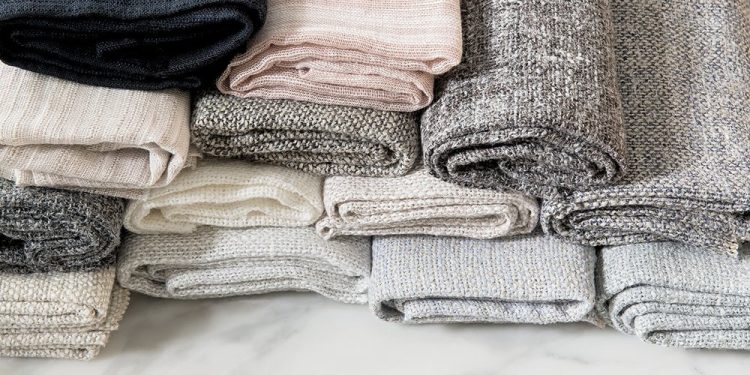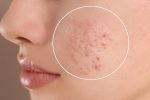How to Choose Viscose Fabric by the Yard for Your Fashion Line

Fashion designers are aware that fabrics are the foundation of good design. Every line is based on choices about texture, color as well as drape and function. Designers who desire comfortable, fashionable and cost-effective fabrics viscose fabric by the yard is the best option. With a myriad of brands and suppliers out there How do you pick the appropriate viscose to match every piece of your collection? This guide will help you understand it step-by-step.
What Makes Viscose Fabric Popular
Viscose is a synthetic textile composed of regenerated cellulose typically derived through wood pulp. Also known as rayon, it can bridge the divide between natural and synthetic fibers. Designers typically choose viscose due to its silky feel, its fluid drape and air-flow.
Since it resembles the properties of luxury materials like cotton and silk, viscose fabric by the yard can be found in everything from summer dresses to blouses. It is a method to combine luxury and affordability and is a constant popular choice in the fashion industry.
Qualities of Viscose That Matter
Softness
The viscosity is soft against the skin. The fine filaments produce an even texture that is comparable to the more expensive fabric. Designers who want to design clothes that feel soft viscose can deliver.
Drape
Drape refers to the way fabric drapes or flows. Viscose is admired because of its amazing drape. In contrast to other textiles that are stiff and woven fabrics, it drapes well with curves, making it perfect for garments which move with the body. In everything from wrap dresses to full skirts the right fabric can bring an idea to life.
Breathability
It’s not just about the touching, the airflow is also a factor. Viscose is a popular choice for better airflow than synthetics in comparison to others. It draws moisture away and allows air to circulate, ensuring that the wearer remains cool in hot conditions.
Shine and Vibrancy
Because of its manufacturing process viscose is often characterized by an ethereal sheen. It gives clothes an airy look without being over-the-top. It also absorbs dyes well, which means the color remains vibrant and vivid.
Types of Viscose You’ll Find by the Yard
All viscose types are not the same. Knowing the major types can help to select the most suitable one for your style.
Regular Viscose (Rayon)
It’s the most popular type of fabric that you can find in shops. It’s affordable, lightweight and flexible. It’s great with dresses, blouses or linings. It’s also great for easy-wearing pants.
High-Wet-Modulus (HWM) Viscose
Sometimes, it is marketed in the form of “modal,” HWM viscose is designed to provide extra durability when wet. This means it is more resistant to shrinking or changing shape when washed. Modal is typically used in intimates, activewear and more expensive casualwear.
Lyocell and Tencel
Although technically a distinct process Lyocell (often known as Tencel) shares many of the characteristics with viscose. It’s strong, soft and more eco-friendly than viscose since it is a closed-loop system. It is pricier for lyocell, however it’s a great choice for top-quality brands or those who are concerned about the environment.
Blended Viscose
Viscose may be mixed with linen, cotton, and synthetic fibres. These blends bring together the characteristics of the two fibers, giving distinct hand-feels and finishing. For instance, viscose-linen blends give coolness, with improved structure.
Key Factors When Shopping Viscose Fabric by the Yard
Finding the ideal viscose is beyond selecting the color or pattern. Be aware of these aspects to prevent buyers from regretting their purchase.
Weight
Viscose is available in a variety of weights. They are measured by grams/square meter (gsm):
- The lightweight (less than 120gsm): Perfect for dresses and tops that are airy. They flow effortlessly and are great for layering.
- Medium weight (120-200 grams): Good for formal dresses, pants and skirts. Provides greater coverage and longer-lasting.
- Heavyweight (over 200 grams): Used sparingly, ideal for draped jackets and jackets.
If you are ordering viscose fabric by the yard, always ask for a sample to ensure it can be felt and witness how it is moving.
Texture
Although most viscose is smooth, a few designs have a slubbed or crepe finish. Crepe viscose has a slight rough texture, perfect for designs that require the appearance of texture, but without the weight. Other weaves appear matte or glossy which allows you to customize the look to your specific silhouette.
Color and Pattern
Viscose fabric absorbs dye evenly which results in vibrant shades. There are many suppliers that provide prints, ranging including geometric repeats and botanicals. Check to see if the fabric’s color is stable, particularly if you anticipate frequent washing.
When you are looking for viscose fabric by the yard, consider the colors you’ll need for season. Do you require a selection of solids? Statement prints? Select a vendor who matches your fashion preferences.
Price Per Yard
The budget is important when it comes to fashion. Although viscose fabric by the yard can be cheap, prices can vary based on weight, quality and source. Take into consideration the amount you’ll need for sample runs, sampling and for production in full.
Matching Viscose to Your Designs
A smart designer will match every type of garment with the appropriate fabric properties. Here’s how you can match the viscose fabric by the yard to the various pieces of your collection.
Dresses and Skirts
If your design requires motion and flow, look for viscose that is light to medium weight with a soft, smooth finish. Wrap dresses, skirts with bias cuts as well as maxi dress benefit from the drape and softness of viscose.
Tailored Pants
Form-fitting pieces, such as pants or jumpsuits, work best when you choose viscose of a medium weight. Find fabrics that have some blend fibers or spandex to give an extra strength and structure.
Tops and Blouses
For tops, opt for a light viscose with a soft touch upon the skin. Crepe- or semi-sheer-textured viscose is ideal for layering or adding an interest with subtle see-through effects.
Outerwear and Layering Pieces
Heavyweight viscose, which mixes with different fibers to make light jackets and layering vests. The fabric is light and lightweight while adding shine to any garment.
Loungewear and Sleepwear
Super soft Modal as well as Tencel viscose is perfect for clothing that is designed to be placed close to skin. The soft hand-feel provides soft comfort to pyjama slip-dresses and robes.
Where to Buy Viscose Fabric by the Yard
The reliability of the source is a big part of the battle for fashion labels. Here’s how you can find reliable suppliers of viscose.
Established Fabric Stores
Local stores usually offer sample yards to review quickly. Staff members can offer advice on the origin of fabric, weight, and the best usage instances.
Online Wholesale Platforms
Websites like Fabriclore, Fabric.com, Mood Fabrics, and Dharma Trading Co. are well-known among designers. You can buy viscose fabric by the yard in small or large quantities. Review reviews, request samples, and verify terms of return before making a large purchase.
Specialty Importers
For viscose that is unique and high-quality certain importers are specialized in European or Asian products. Some of these suppliers offer eco-friendly and OEKO-TEX-certified options.
Trade Shows
Events such as Premiere Vision or Texworld often have fabric vendors from around the world. It is possible to meet vendors in person, touch their fabrics, and discuss your custom-designed projects.
Direct from Mills
If you’re producing on the scale of a factory, you might want to reach out directly to mills. Mills are able to cooperate with brands for minimum yardage requirements and can provide customized coloring or even finishing.
How to Care for Viscose Garments
After you’ve picked out viscose fabric at a yard and made your own garments the right way, you can ensure they last for a long time.
- Clean with caution: Viscose is susceptible to shrinking and may lose its strength when it is wet. Make use of cool water, gentle washing cycle and hand washing. Do not wring.
- Dry with air: Lay items flat or hang them to dry. Drying with machines increases the chance of wrinkles and shrinkage.
- Storage and ironing: Iron inside out with low to medium heat, preferring in a condition where the fabric remains slightly damp. Avoid using excessive steam as viscose will scorch easily.
- Avoid excessive exposure to the sun: While viscose is a good dye holder, intense sun over time can cause fade.
Careful maintenance helps your designs to stay in top shape and reflect nicely on your company’s image.
Why Viscose Fabric by the Yard Is a Smart Bet
For designers who are launching a brand new collection or increasing production levels, the viscose material bought by the yard ticks a lengthy list of options. It is affordable and has a premium quality, is a great fit for all seasons, is able to hold dye well and is able to adapt to a wide range of shapes.
When you know the different types and make them fit to your clothing requirements, you can create your own line that is destined to be successful. Careful selection, sampling and careful handling ensures that every item brings your vision into reality.
If you’re eager to begin creating an upcoming collection make sure to put viscose fabric for sale on your list of sources. Make sure to purchase samples, ask plenty of inquiries, and give every fabric with the respect it deserves. The company’s image (and the customers) will be grateful to you.
Discover our extensive collection of custom-printed, ready mill-dyed, and yarn-dyed fabrics designed to perfectly complement your upcoming collection. For tailored support or any questions, contact us at hello@fabriclore.com. Experience effortless, genuine, and cost-effective fabric sourcing with Fabriclore.


